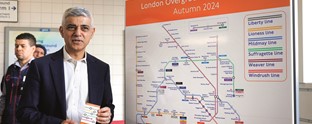Five minutes with Sam Pollen

Head of digital writing at Reed Words, Sam Pollen speaks to Transform about the ins and outs of verbal identity, including the importance words have in creating a strong brand identity and how digital writing has worked with technological advances.
What does it mean for a brand to have a ‘verbal identity’?
In simple terms, a verbal identity is what you choose to say, and how you choose to say it. This isn’t just about brands that use words to create a big impact, like Innocent or BrewDog. A law firm has to consider verbal identity, too.
What role do words play for a brand? Why are they important?
Everyone in a company uses words on a daily basis, whether they’re emailing colleagues or talking to clients. Words therefore have a huge impact on how you get things done. More generally, we live in an age of words. Once upon a time, brands put products on shelves, and didn’t have to talk to customers. Now they have websites, social media channels, and so on. Words are a bigger part of the way brands communicate than ever before, so getting them right is crucial.
It’s hard to convey a brand’s identity through the sole use of words with no image to show what you are wanting to express. How do you overcome that challenge? What other obstacles do you face when creating a verbal identity?
You’re right, it’s a challenge – and a key part of our job is to help brands figure out which language they want to ‘own’. But it’s worth saying that the goal isn’t always to stand out. It’s often about understanding the language your customers are using, so you can avoid words being a barrier. Businesses need to treat words as a strategic tool that can help or hinder them at every level. In most cases, it’s not as simple as finding a magic phrase that will sell a million products!
How does a brand’s verbal identity work with its design? What is the trick to making the two work well together?
The trick, in a nutshell, is collaboration. Sometimes you want a clear contrast between the visual and the verbal story. Sometimes you want them both to pull in the same direction. We work closely with designers every day, pooling our technical skills so we can build a brand that works.
How has digital writing taken advantage of the increased technological advances of the last decade?
It's an interesting time to be a writer. We have lots of new tools that help us do our job better. For example, we can work with UX designers to test which words people read and understand, and which they don’t. We can jump on social media, and look at the terms people are using to describe a particular activity or event. This experience has taught us that some of the preconceptions we had about ‘good writing’ were wrong, and others were bang on.
In journalism, and to some extent in marketing, we’ve also seen the rise of ‘automated writing’ – using robots to write headlines, Google ads, and so on. We’re still a long way off this becoming a common way of doing things, but I think it will ultimately lead to strong brand writing (written by robots and humans alike).
What is the most important aspect to consider when trying to create a bold and memorable verbal identity?
Like all creative tasks, it’s about understanding the audience. What do they care about? What do we want them to think and do? Remember, ‘bold and memorable’ isn’t necessarily the goal – what most clients are looking for is an effective verbal identity.
How do you craft the right tone of voice through digital, design and copy? How do you know when you’ve found it?
The aphorism ‘Perfect is the enemy of good’ definitely applies to the kind of writing we do. It’s not necessarily about finding the ‘right’ word, but about using words as a tool to improve communication. When you’re asking people across an organisation to write in a different way, it’s impossible to give them a script. Instead, you need them to understand the principles behind what you’re trying to do, then write in a way that’s natural to them. When it comes to digital in particular – most people using an app or a website aren’t there to read. The job is to help them navigate and understand without thinking too much about it. A lot of my job is about taking words away, rather than adding more of them!
What is the best way to maintain the uniqueness of a human voice while building a brand identity?
People will always communicate best in a way that’s natural to them. It feels authentic, because it is authentic. So, when we create a verbal identity, we give people principles, tips and examples, and train them in how to put them into action. But we don’t give people rules or scripts. The last thing we want to do is to scare them off from communicating in a natural, human way.












